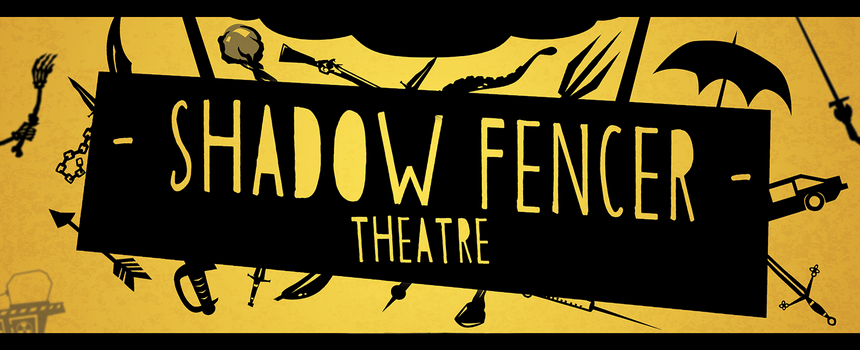
How to by Seen by Humans: A Guide to Showcasing Your Game
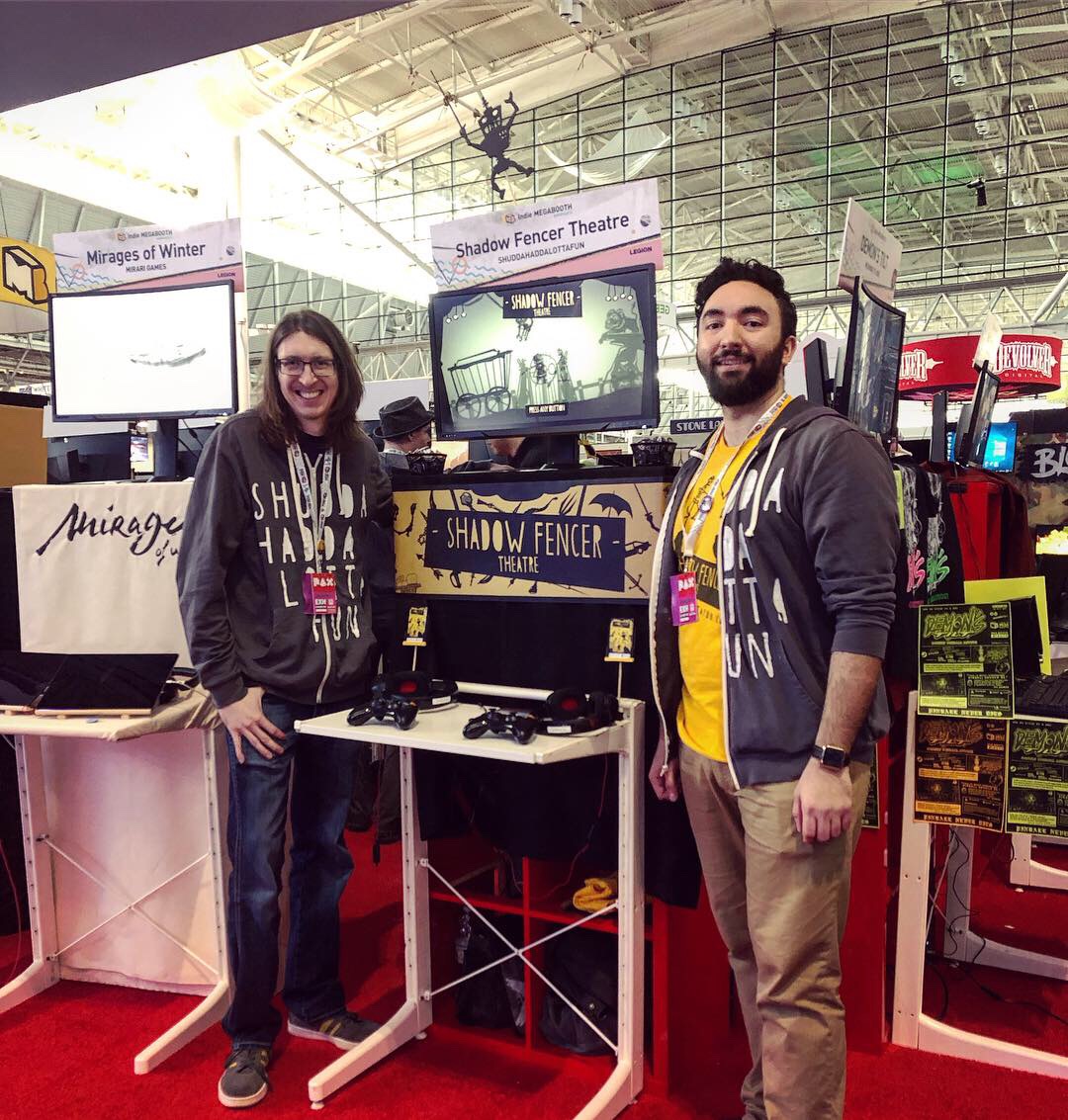
We just had a great showcase of our game at PAX East 2019, and you know what, we’ve got some thoughts! We were honored to have our game Shadow Fencer Theatre, a competitive awkward physics sword fighting game set in the world of shadow puppets (available to wishlist on Steam right now… please do. We’ll wait here for you to get back... ), selected to showcase with Indie MEGABOOTH as part of the MINIBOOTH program. It was two days of non-spot interaction with the players and it was wonderful to see people enjoy our game so much. Although we are still playing catch-up with everything that happened with the show, we wanted to give some helpful hints for those who want to demo at upcoming conventions. Much of this is a do as I say, not as I do, and we will be working on applying this to ourselves in the future.

Have an Event Ready Build
There are some key factors in how a player engages with your game that differ between playing at home and playing at an event. Playing a game at home, the player already decided to sit down with your game and may try all the different modes, experiment around, and take their time before moving on. Showcasing your game at an event means you have to grab a person’s attention as they walk past, competing against crowds screaming for freebies, the occasional e-sport, and the fact that every booth is blasting EDM. After all that, all you have to do is give your player the best possible experience in the shortest amount of time before the EDM draws them deeper into the convention.
A good starting point with this is to have an Attract Mode. This can be called many things. I’ve always called it a Demo Loop for some reason, but an Attract Mode is a game state that when left idle, reverts back to the flashiest part of your game to attract passerbys. The way Shadow Fencer Theatre handles this is that the game will kick into an AI-vs-AI fight, so people can see exactly what the game is while the game title prominently displayed. You could also let the game show a trailer or video that gets the players excited. Either way, it’s important that this Attract Mode triggers itself after a short period of time from any game state. There will be moments when you step away or are busy talking with someone and if the game is stuck on a pause menu, there's a good chance potential players will walk by without noticing all the gorgeous hard work you put into your game.

The second thing I’d recommend, that we could certainly do better ourselves is having a build of the game setup specifically for the event play. Early days of our game the menu was simple. Players would select single or multiplayer and then the game would randomly select their characters and the stage to play on. This meant that it was extremely quick for new players to start playing the actual game. Now, as we are using a build that is meant for commercial release, there are a lot of menus and options that new players must navigate. This is great for a game to have of course, but when it comes to showcasing at an event, it slows the players down and often they only experience a single slice of your game. For us, that means players miss out on the various mini-games we have that really make our game unique. One solution that we are looking into would be to make an event specific mode/build of the game that takes the players right into the action, and then jumps into a random mini game after their fight. This way each play is unique and they get to see more of what our game offers. We can also use this opportunity to do event specific marketing within the game, showing social links and thanking players for trying it out. This would also be a good time to direct them towards the Steam page to wishlist or purchase the game.
Heights and Lights
This is a simple one to help your booth stand out. Go Tall. Go Bright. When demoing with the MINIBOOTH, you are limited to how much space you can utilize, and popup banner displays are a no-go, so you’ve got to get a little creative with your decorations to help your space stand out and draw a crowd. For Shadow Fencer Theatre, we raised the monitor as high as we could, and attached a shadow puppet cut-out of one of our characters to the top of the monitor. This helped a lot, as we could overhear people say “look at that robot with a sword.” However, we could have done a lot more. You know what would have been better than 1 shadow puppet cut-out taped to a monitor? How about 16 shadow puppet cutouts taped to a monitor. Now we are talking.
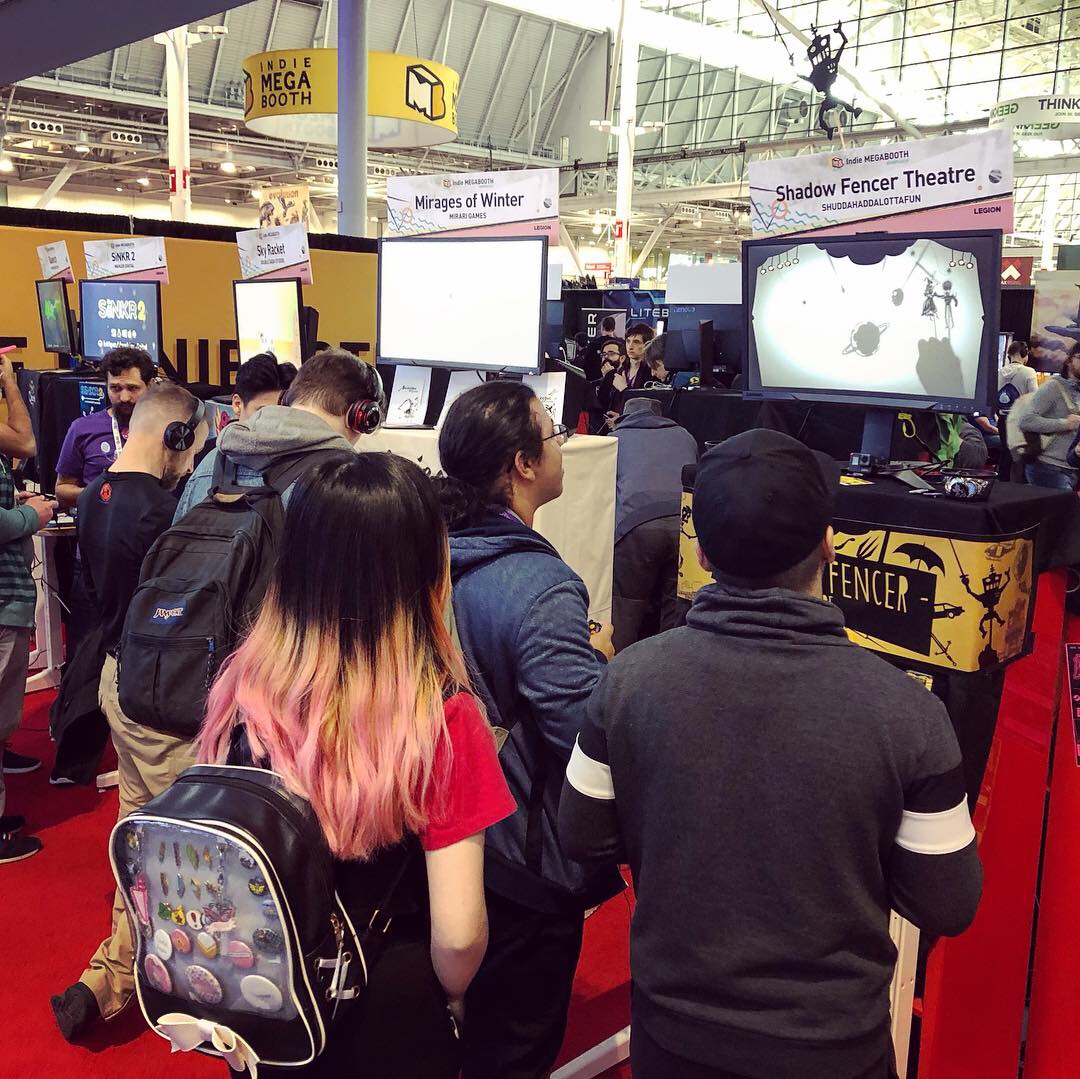
Our fellow MINIBOOTH friends did similar things that helped. We saw LED light strips, bright colored flyers, plushies and more. All these things help catch the eye of the passerby by giving them a quick glimpse into the vibe of your game and what makes it unique. Even if you are demoing in a traditional 10x10 booth, this still applies. Anything that can bring your game above the crowd level will draw people in from a distance and will get you some much desired attention.
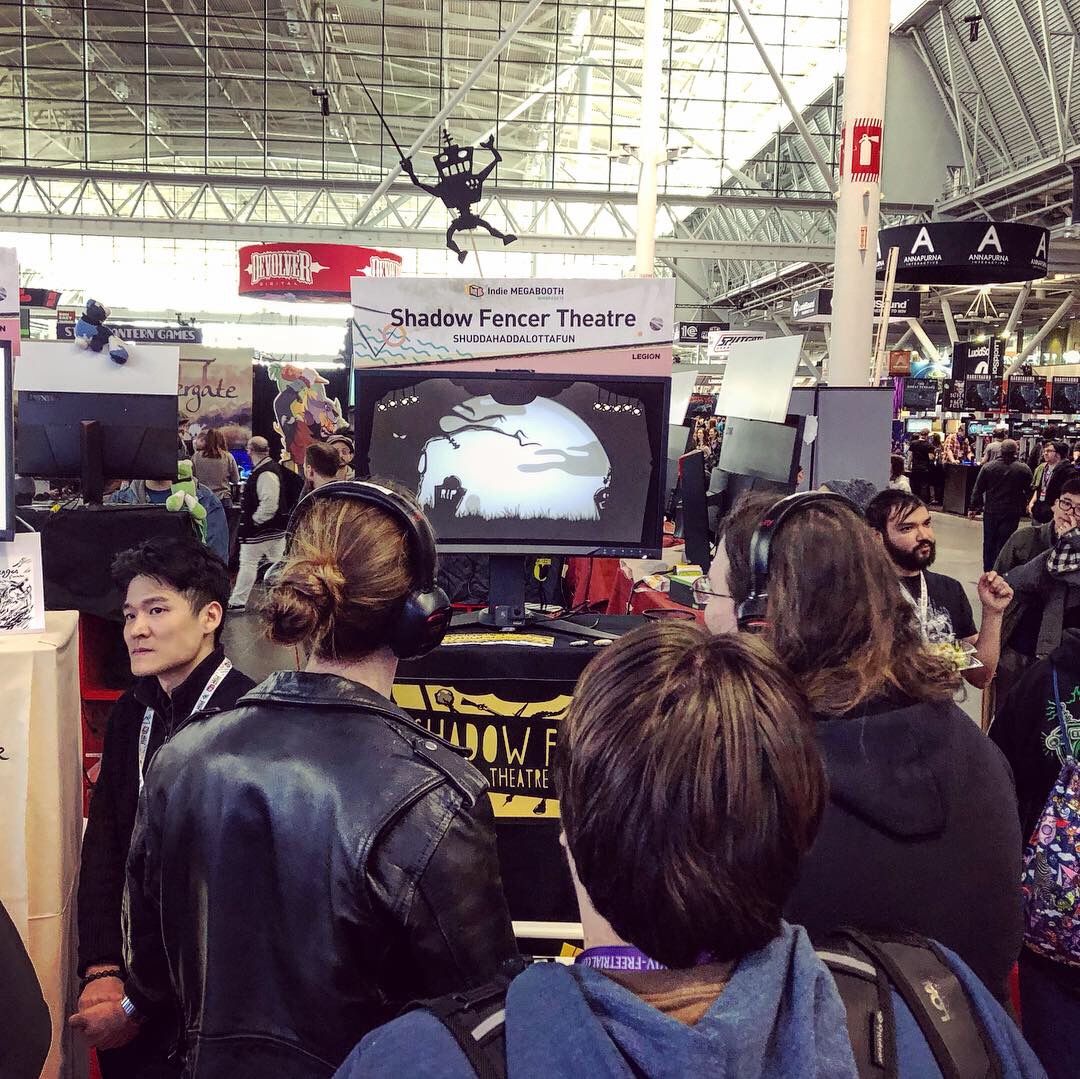
Prep, Prep, Rest
The list of what you need to prep for a show is probably unique to the team and also would take too much time to write about, but here are some key things. Have your game build ready to go and tested long before the show. That should be the last thing you need to worry about. A stable build that you have faith will run the entirety of the show makes all the difference in the word. Pack up everything you need before hand. Make a checklist, then add things you probably don’t think you need. Pens, paper, cardboard, tape (Gaffers tape is my go-to), glue, battery packs, cough drops, velcro, cups, adult diapers... I don’t really know, but being over prepared is certainly better than needing to stop everything and run to the store during setup.

Prep for yourself. Bring comfy shoes. Pack snacks. Bring a water bottle to refill. If you can, bring along one more person than you think you need. An obvious benefit is allowing your team to work in shifts, giving each person time to rest. Running non stop over the course of the week can be brutal, so if you can share the burden, do so. Besides, there are many situations where players become fans, and start to ask questions about the game. The more staff you have on hand, the more time you can give to these kinds of discussions while having a team member get the next set of players lined up and playing the game.
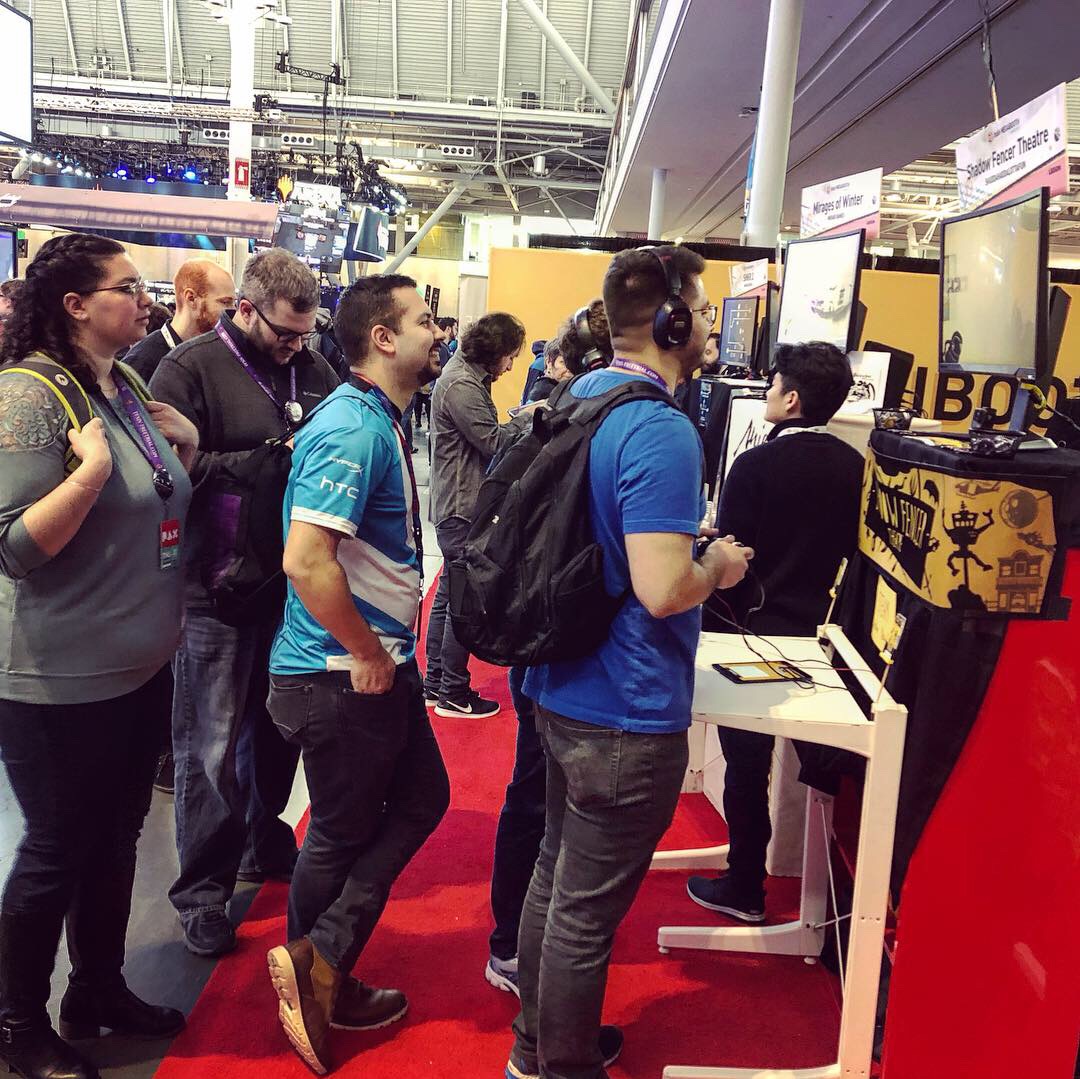
Merch!
Ok, this one we didn’t do at all, and kind of regret. We saw some awesome results from fellow developers who had merchandise and steam keys available for sale. Now, this may be more of a PAX thing, as it is a consumer facing event. I probably wouldn’t try and sell t-shirts at GDC, but at PAX it gives new fans an instant way to be an advocate, show support, and connect with your product. A fellow dev completely sold out of the shirts they brought, which helped cover almost the entire cost of showcasing at PAX. Beyond the monetary value, the real benefit of having something to sell is you already have the player’s attention from the demo and there is a brief period of time when they want to be part your "community" or more importantly bring your game into their community. PAX goers experience a LOT of games during the course of the weekend, and it’s easy to forget about many of them once they get home. Selling merch that turns players into advocates, gets your game in front of more faces and reminds them how much they had wanted to download your game that night after the show. We had Shadow Fencer Theatre available to wishlist on Steam (handy-dandy link right here), but if we had it available to purchase, we for sure would have made some sales.

That’s it for now. We're about to bunker down for a bit, probably designing t-shirts and marketing material as we enter the final stage of development: Spreading the word about Shadow Fencer Theatre. We are releasing this Summer on Steam (PC/Mac) and on Xbox One. We’ll have an exact date to announce soon, but for now you can Wishlist us on Steam. Yes, that is the 4th time we’ve asked you to wishlist the game, but it’s really important to us. Thank you for reading this… and wishlisting the game. Ok, we’ll go now.
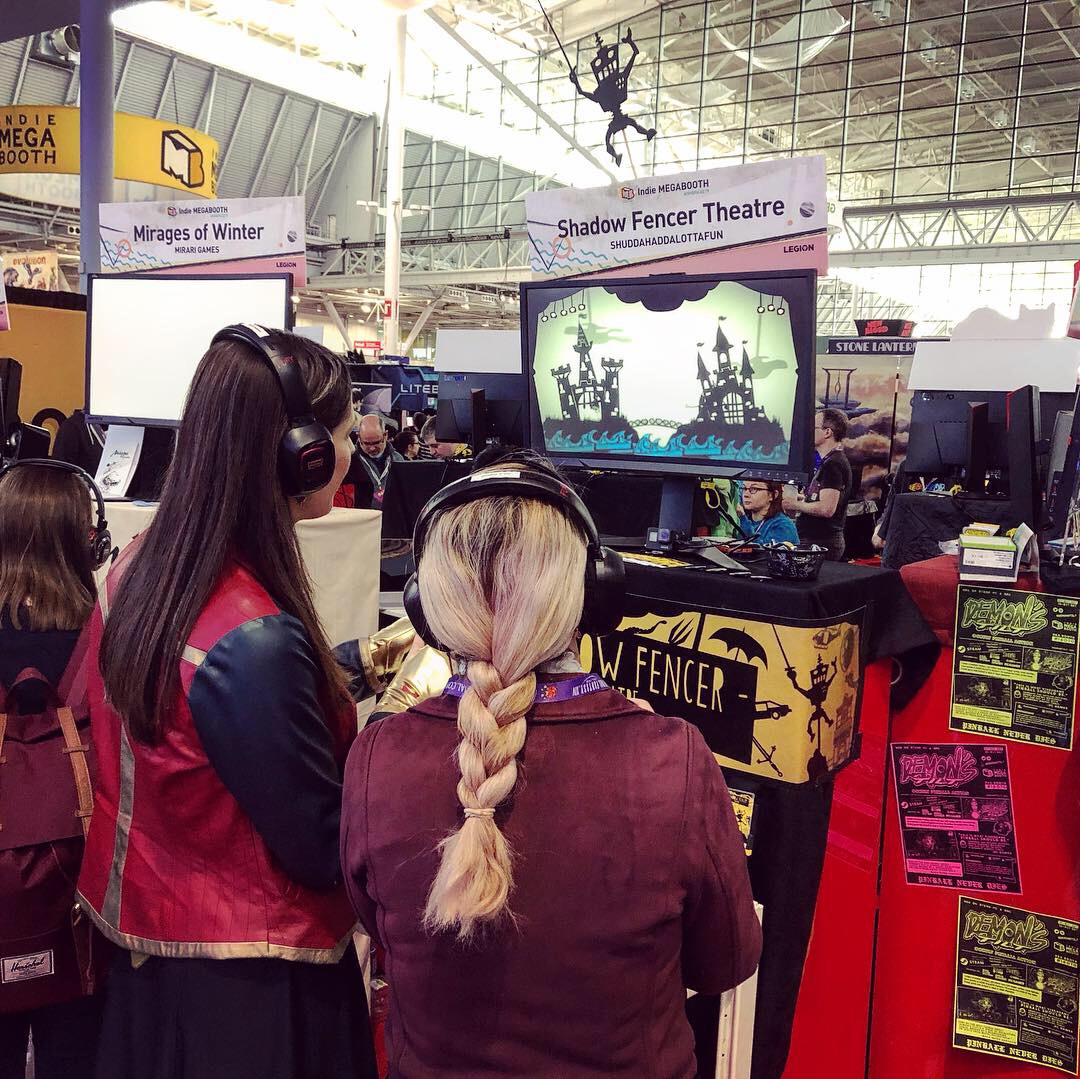
Be sure to follow Shadow Fencer Theatre on Intel DevMesh for the latest information.